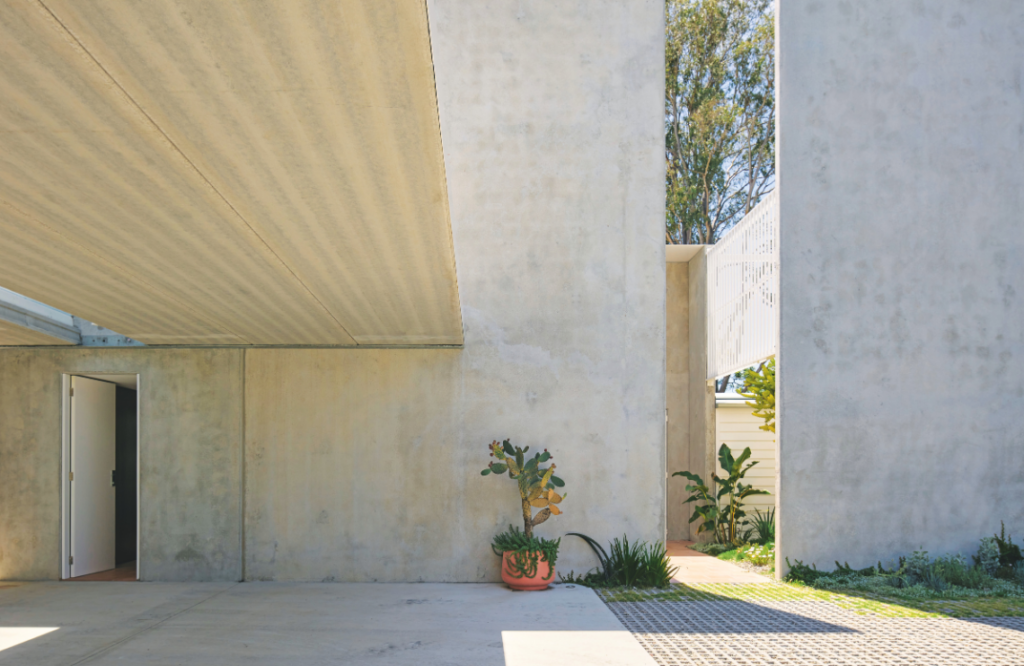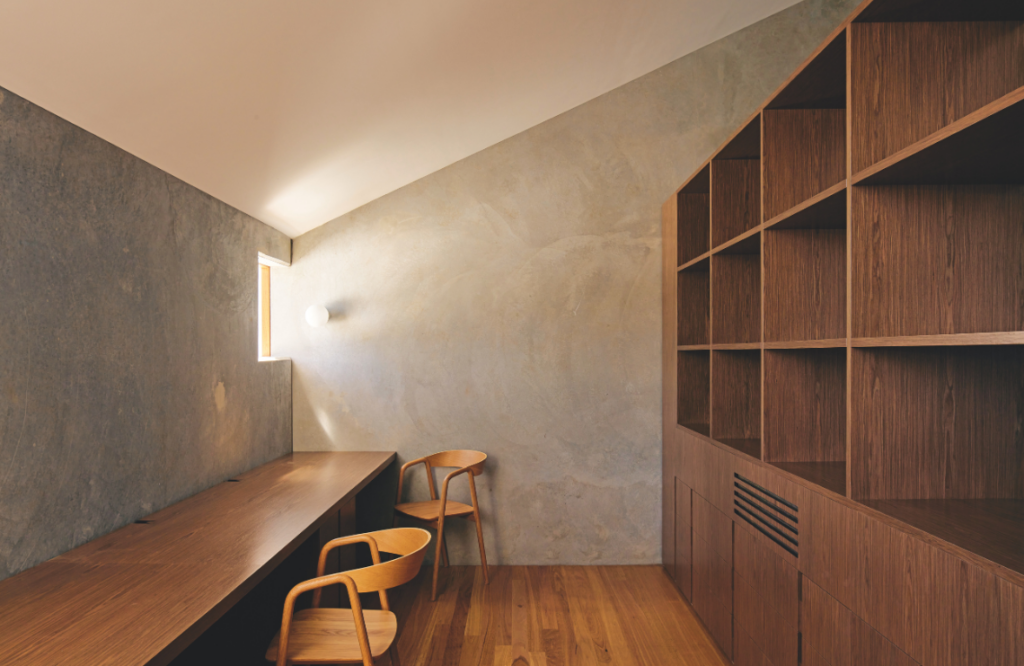A Concrete Monument Rooted in Ritual and History
This grand, repurposed home is like no other, featuring heavy, fortress-like masonry house and a post-war original structure. The architects lovingly carved and moulded the structure into multiple living spaces where guests can gather, connect, and enjoy.
The homeowners carefully mapped out their daily rituals to guide the natural use of the space and create this monument. This design process also honoured and preserved the home’s historic origins throughout the transformation. “A primitive architectural intention was used to establish building and landscape through the metaphor of a ruin,” says director and architect Christopher Furminger. “The site was conceived as a large garden to hold programs for daily activities. Heavy masonry walls intersect the site, carving out public and private courtyard gardens, creating new entries into rooms through garden spaces, encouraging the inhabitants to engage with the surrounding climate, landscape and structure.”

Within the concrete structure, there are smaller dwellings, each with a separate entrance
Architecture Designed for Adaptability
By preserving existing building fabric and using the original plan, Christopher’s team wrapped the masonry house with a new structure. They also maintained the central spaces within the home during this transformation process. This enabled the family to live on-site during construction, reducing the overall cost of the project.
Programmatic organisation and careful additions allow the home to function as smaller apartment-type dwellings with separate entries and courtyards. Additionally, the team included provisional services to support the layout and enhance flexibility in how each space functions. This approach was important for the homeowners, as it enabled multiple types of occupation within the home. These include a work-from-home office, a rental dwelling, or accommodation for extended family members. “The intention was to create a building with a presence all of its own, to loom with physical power, embodying a geometric order with primitive structural force,” shares Christopher. “Heavy brick, tort concrete, pure dark void containing the endurance of the ruin, reduced to only what lasts.”

Each window is cleverly placed to catch the natural light
Light, Landscape and Living Spaces
Each room of the masonry house plays with height and light, while strongly engaging with the surrounding landscape. Furthermore, the repurposed entry, carport, office, boot room, ensuite, and walk-in robe naturally flow into the home’s stunning courtyards and gardens, softening the harsh masonry structure. “Here the garden is used as a mediator for all interior spaces. Landscape and structure sit on an equal footing, each treating the other with respect and care,” says Christopher.
Material Honesty and Environmental Consideration
Material exploration led to the use of commercial materials and construction techniques. The builders used precast concrete flooring for the roof and installed tilt-up concrete panels to form the walls. “The use of tilt-up concrete walls and hollow-core concrete roof allowed us to develop a building with a high thermal mass. This helps the occupants by significantly reducing their heating and cooling energy requirements and the associated greenhouse gas emissions,” says Christopher.

High ceilings and a natural colour palette creates a calm and serene environment
The team developed a five-brick palette during excavation, collecting stones and sand to match masonry finishes and link materials. As it is located on a flood plain, the home’s strong concrete structure also acts as its protector, countering the climatic conditions of the area and keeping the family safe inside.
“The main entry and garden, which is generally an area for cars to pass through, has been reinterpreted as a space with many uses,” says Christopher. “The front garden now competes with the riverfront for parties and social gatherings.”



























